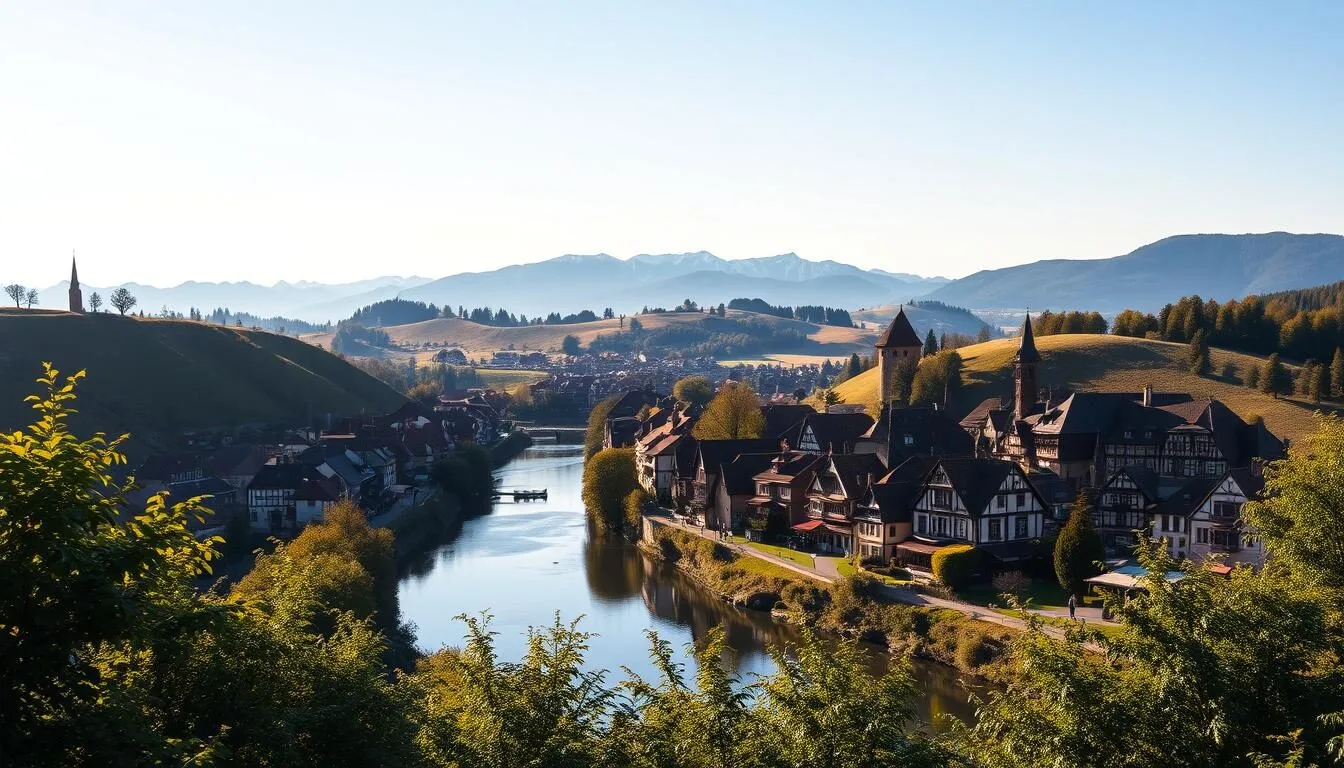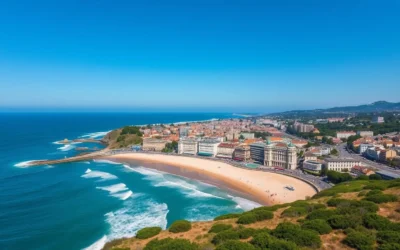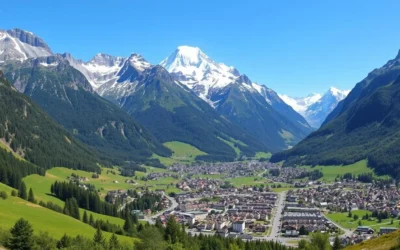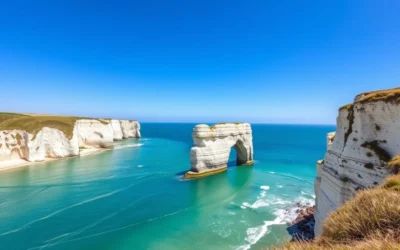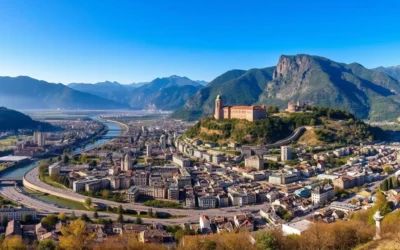✓ Accommodations✓ Flights✓ Rental Cars
Imagine strolling through pictureque villages and vineyards in a region known for its enchanting landscapes. Alsace, in eastern France, is a destination that offers a unique experience throughout the year.
You’re about to uncover the secrets to experiencing this charming region at its best. With its semi-continental climate, Alsace has distinct seasons, each offering a different charm, from blooming spring landscapes to golden fall vineyards.
To make the most of your trip, understanding the local weather patterns is crucial. This guide will help you navigate the seasons and plan your visit during the best times, ensuring a memorable journey.
Discovering the Charm of Alsace Through the Seasons
As you explore Alsace, you’ll discover that the region’s character is revealed through its changing seasons. This transformation is not just about the weather; it’s about the experiences, activities, and ambiance that each season brings.
The Unique Character of France’s Eastern Border
Alsace, located on France’s eastern border, boasts a distinct cultural and geographical identity. Its semi-continental climate means that the region experiences four clear seasons, each with its own charm. The Vosges Mountains to the west create a rain shadow effect, resulting in a relatively dry climate that is perfect for outdoor activities throughout much of the year.
How Weather Shapes Your Alsatian Experience
The weather in Alsace significantly influences your travel experience. From the blooming flower festivals in spring to the sun-soaked vineyards of summer, and from the harvest season in fall to the magical Christmas markets in winter, the climate dictates the activities and enjoyment you’ll have. Understanding the seasonal weather variations is key to planning your trip and making the most of your time in Alsace.
| Season | Weather | Activities |
|---|---|---|
| Spring | Mild temperatures, blooming flowers | Flower festivals, vineyard tours |
| Summer | Warm, sunny days | Outdoor activities, wine celebrations |
| Fall | Cooling temperatures, harvest season | Wine harvest experiences, autumn festivals |
| Winter | Cold, potential snow | Christmas markets, winter sports |
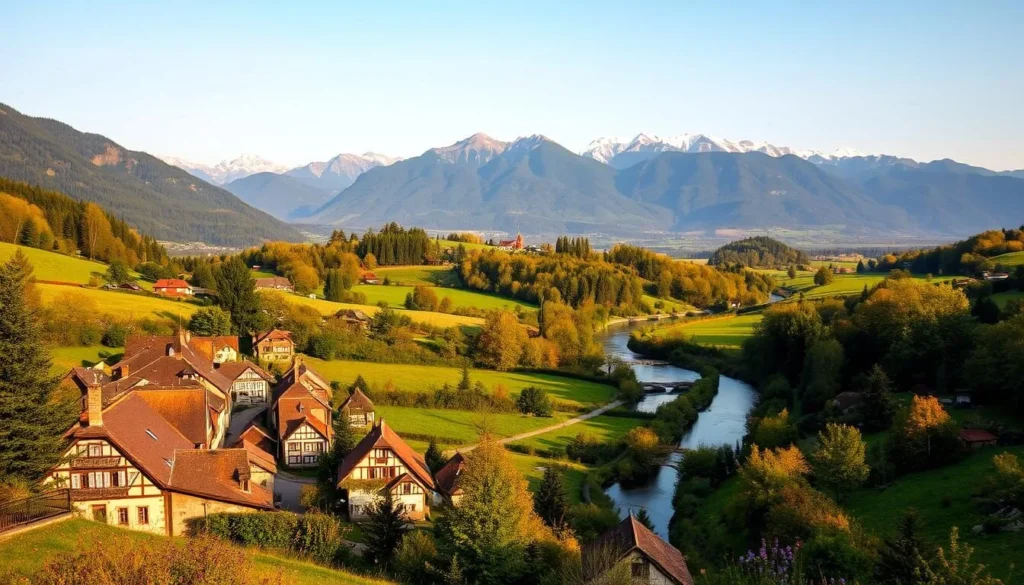
Understanding Alsace’s Climate Patterns
Understanding the climate patterns in Alsace is crucial for planning a trip that makes the most of your visit. Alsace’s climate is influenced by its geographical location in eastern France, bordering Germany and Switzerland.
The Semi-Continental Climate of Eastern France
Alsace experiences a semi-continental climate, characterized by warm summers and cold winters. The region’s temperatures vary significantly between seasons, with warm weather in summer and cold snaps in winter. This climate type is typical for the region, influenced by its inland position and the presence of the Vosges Mountains.
Regional Weather Variations: From Rhine Valley to Vosges Mountains
The climate in Alsace varies between the Rhine Valley and the Vosges Mountains. The Rhine Valley tends to be warmer and drier, while the Vosges Mountains are cooler and wetter. For instance, rainfall is more pronounced in areas like Colmar and the Vallée de Munster compared to Strasbourg. Understanding these variations helps you plan your trip according to the seasons and activities you have in mind, making the most of your place in Alsace.
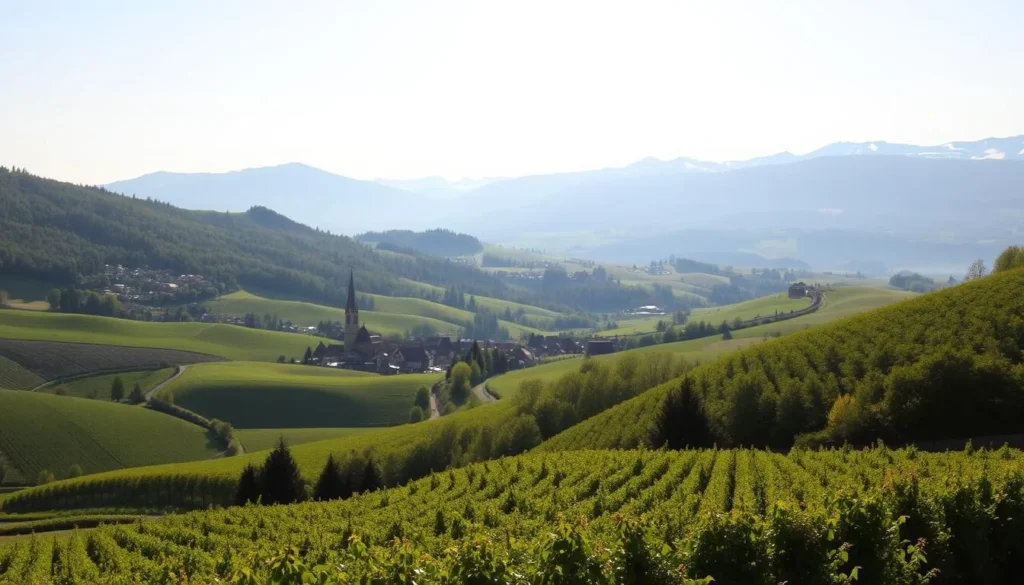
Spring in Alsace: Blooming Landscapes and Mild Days
Spring brings a fresh palette to Alsace, painting the landscapes with blooming flowers and greenery. This season is a wonderful time to visit, with mild temperatures ranging from 12 to 20 degrees Celsius (54 to 69 degrees Fahrenheit).
March to May Weather Overview
During spring, Alsace experiences a gentle warming trend. March can still be quite cool, but by April and May, the temperatures become pleasant, making it an ideal time for outdoor exploration.
| Month | Average Temperature (°C) | Average Temperature (°F) |
|---|---|---|
| March | 12 | 54 |
| April | 16 | 61 |
| May | 20 | 68 |
Cherry Blossoms and Spring Festivals
In April, the cherry blossoms start to appear, creating a stunning landscape. You can enjoy these blossoms by hiking the Cherry Blossom Circuit in Bischoffsheim, a truly magical adventure. Spring festivals also begin to take place, celebrating the region’s culture and heritage.
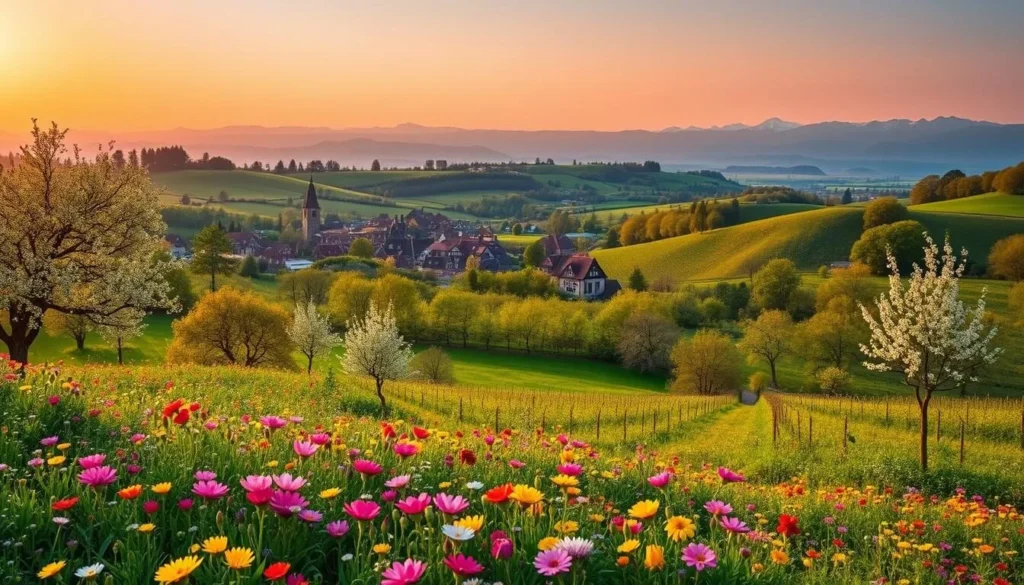
Outdoor Activities for Spring Visitors
Spring is the perfect time for various activities in Alsace. You can explore the region’s extensive hiking trails, go cycling along the famous Alsace Wine Route, or enjoy a boat tour along Strasbourg’s canals or the Rhine River. The mild weather also makes it an ideal way to enjoy outdoor photography, capturing the beauty of blooming flowers and half-timbered houses.
Some of the best things to do include:
- Hiking the Cherry Blossom Circuit
- Cycling the Alsace Wine Route
- Enjoying boat tours
- Outdoor photography
Summer in Alsace: Sun-Soaked Vineyards and Vibrant Festivals
Experience the best of Alsace during summer, with its warm climate, vibrant festivals, and sun-kissed vineyards. The region comes alive with a plethora of activities and events that attract visitors from all over the world.
June to August Temperature and Rainfall Patterns
Summer in Alsace is characterized by warm temperatures, with July being the hottest month. Average highs reach around 25°C (77°F), making it ideal for outdoor activities. Rainfall is relatively low during these months, with occasional thunderstorms.
Summer Festivals: From Music to Wine Celebrations
Alsace hosts numerous festivals during the summer, celebrating music, wine, and local culture. These events add to the region’s vibrant atmosphere, offering something for every interest. From traditional folk music to wine tastings, the summer festivals are a highlight of the Alsatian calendar.
Beating the Heat and Managing Summer Crowds
The peak tourist season means that popular destinations can get crowded. To make the most of your visit, consider exploring less touristy villages like Mittelbergheim or Bergheim. Visiting major attractions early in the morning or later in the afternoon can also help you avoid the crowds. Additionally, cooling off at natural swimming spots like Kruth-Wildenstein Lake is a great way to beat the heat.
| Month | Average High Temperature | Average Rainfall |
|---|---|---|
| June | 23°C (73°F) | 70 mm |
| July | 25°C (77°F) | 60 mm |
| August | 25°C (77°F) | 60 mm |
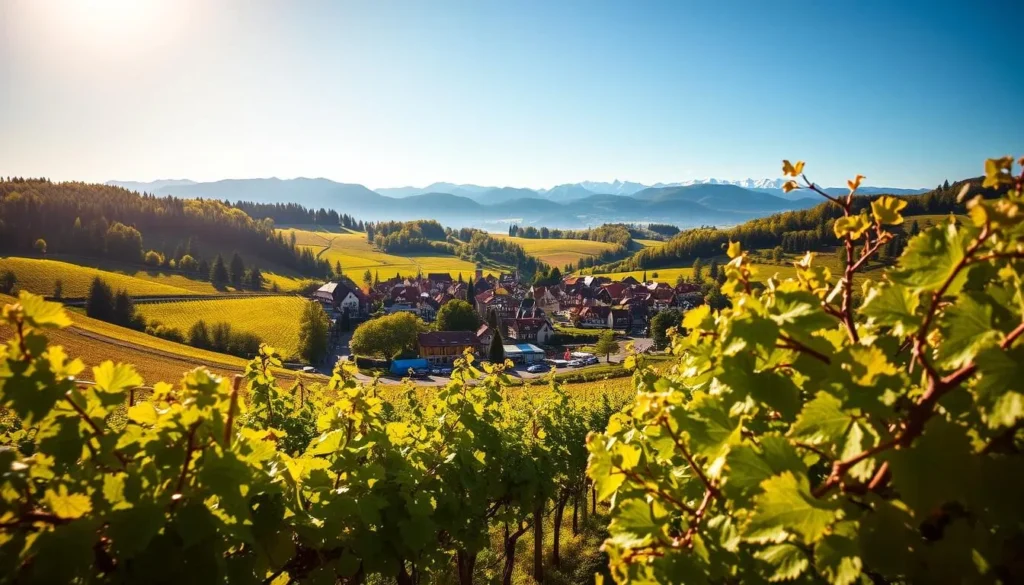
Fall in Alsace: Harvest Season and Golden Vineyards
Fall in Alsace is a season of change, bringing with it a kaleidoscope of colors and a chance to experience the region’s famous wine harvest. The leaves start changing color, the air is crisp, and there are fewer tourists, making it an ideal time to explore this beautiful region.
September to November Weather Conditions
During the fall season, Alsace experiences mild temperatures, ranging from 45°F to 65°F (7°C to 18°C), making it perfect for outdoor activities. The weather is generally dry, with some occasional rain showers. You can expect a gentle breeze carrying the scent of ripe grapes through the vineyards.
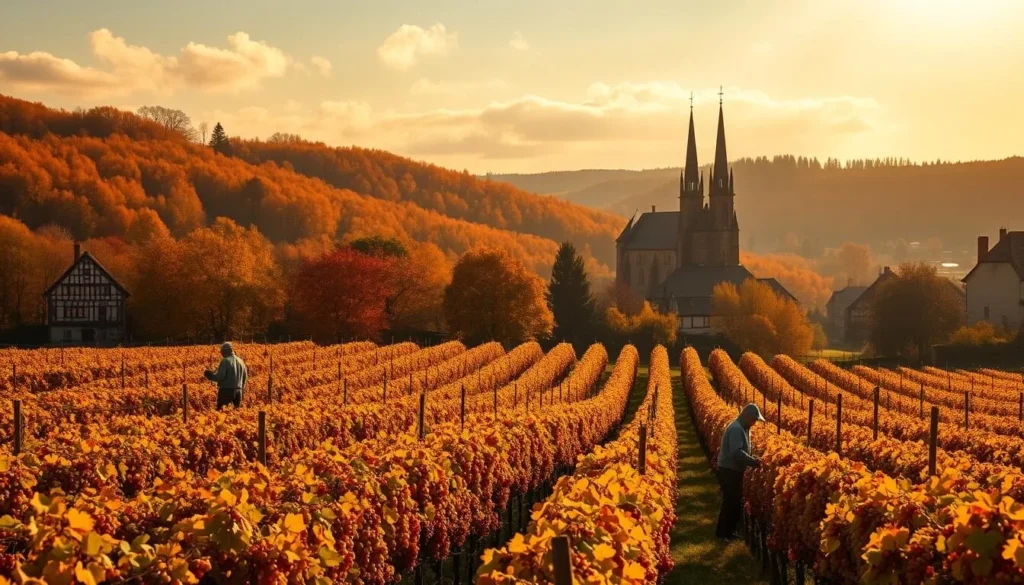
Wine Harvest Experiences and Autumn Festivals
Fall is the time for wine harvest experiences and autumn festivals in Alsace. You can participate in grape picking and processing, and enjoy wine tastings at local wineries. The region hosts various festivals celebrating the harvest season, offering a unique glimpse into the local culture.
Cycling the Wine Route in Perfect Fall Weather
The fall season offers perfect weather for cycling the famous Alsace Wine Route, with comfortable temperatures and stunning vineyard landscapes. You can explore the charming towns along the route, such as Eguisheim, Riquewihr, and Turckheim, and visit dedicated wine villages like Mittelbergheim, known for their exceptional wineries and wine tastings.
Overall, fall is a great time to visit Alsace, with its mild climate, vibrant festivals, and exciting wine-related activities.
Winter in Alsace: Christmas Markets and Snowy Landscapes
Alsace in winter is a treat for the senses, with snow-capped Vosges mountains, twinkling Christmas markets, and hearty regional cuisine. This season offers a unique blend of outdoor adventures and cozy indoor experiences.
December to February Weather Expectations
During the winter months, Alsace experiences cold temperatures, with average highs ranging from 4°C to 6°C (39°F to 43°F). Snowfall is common, especially in the Vosges mountains, making it an ideal destination for winter sports enthusiasts. You can expect a serene winter landscape, perfect for a variety of activities.
The World-Famous Christmas Markets of Strasbourg and Colmar
Alsace’s Christmas markets are world-renowned, with Strasbourg and Colmar being the highlights. You’ll find festive stalls selling local crafts, mulled wine, and traditional delicacies like bredele and Alsatian pastries. These markets are a great time to experience the region’s festive atmosphere and holiday traditions.
Winter Sports and Cozy Indoor Experiences
For adventure seekers, the Vosges mountains offer excellent skiing and snowboarding opportunities. Resorts like La Bresse and Le Markstein provide slopes for all skill levels. If you prefer indoor activities, explore Alsace’s impressive museums, such as the Unterlinden Museum in Colmar, or enjoy a relaxing day at thermal spas like Niederbronn-les-Bains. You ‘ll find that winter is a great time to indulge in the region’s cozy winstubs, savoring hearty dishes like baeckeoffe and choucroute garnie.
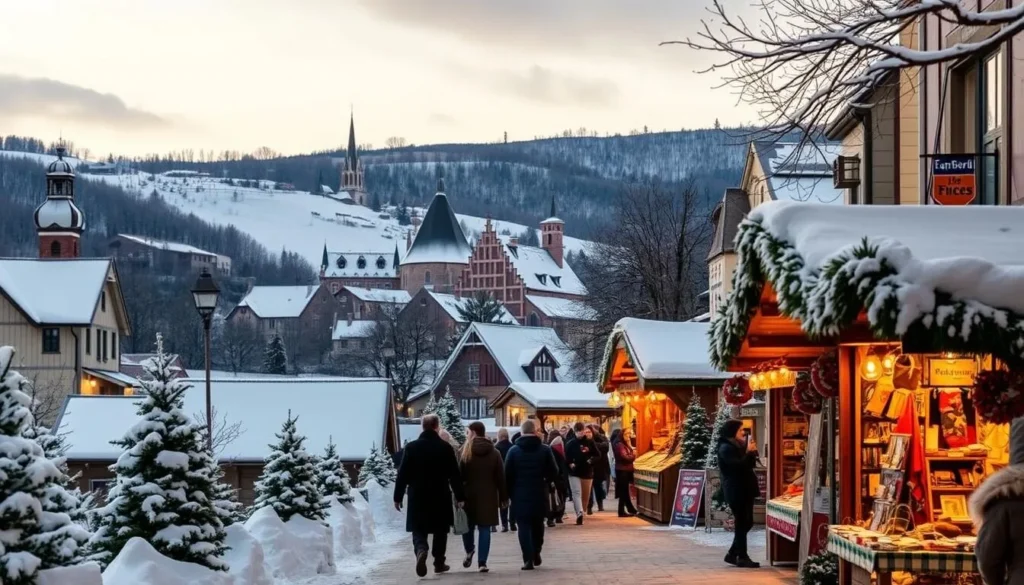
Alsace, France: Best Months for a Weather-Savvy Trip
The charm of Alsace is undeniable, but to truly experience its beauty, you need to know the best times to visit. Alsace offers a unique blend of cultural richness and natural beauty, making it a compelling destination for travelers. The key to a memorable trip lies in understanding the region’s climate and planning accordingly.

May and June: Perfect Spring Conditions
Visiting Alsace in May and June means enjoying pleasant spring weather with mild temperatures and fewer tourists compared to the peak summer months. These months are ideal for exploring the region’s picturesque villages, vineyards, and outdoor attractions without the crowds.
September and October: Ideal Fall Experiences
September and October bring comfortable fall weather to Alsace, making these months perfect for wine harvest experiences and enjoying the region’s famous vineyards. The avoid crowds strategy works well during this period, as the summer tourists have left, and the Christmas market crowds have not yet arrived.
Shoulder Season Benefits: Better Prices and Fewer Crowds
One of the significant advantages of visiting Alsace during the shoulder season (May-June and September-October) is the lower accommodation prices and fewer crowds at popular attractions. You’ll find that restaurants and cafes are less crowded, allowing for a more relaxed dining experience. Additionally, local transportation is less congested, making it easier to navigate between towns and villages.
By planning your trip during these best months, you’ll not only have a more enjoyable trip but also make the most of your travel budget. Alsace, with its rich history, vibrant culture, and stunning landscapes, awaits your visit at the right time.
Comprehensive Month-by-Month Weather Guide
Planning a trip to Alsace requires a good understanding of its climate throughout the year. This month-by-month guide will help you prepare for the varying weather conditions and make the most of your visit.
January to March: Winter Chill and Early Spring Awakening
The first three months of the year are characterized by cold winter weather, with January being the chilliest. As March progresses, you can expect early signs of spring, but it’s still quite cool. Temperatures gradually rise, but winter clothing is still essential.
April to June: Blooming Season and Warming Temperatures
Spring is in full bloom from April to June, with mild temperatures and fewer crowds. It’s an ideal time for outdoor activities like hiking and cycling. The weather becomes increasingly pleasant, making it perfect for exploring Alsace’s picturesque villages and vineyards.
July to September: Peak Summer Heat to Harvest Beginnings
Summer brings warm weather, with July and August being the peak months. It’s the best time for wine festivals and outdoor events. As September approaches, the temperatures begin to drop, signaling the start of the harvest season. It’s a great time to experience Alsace’s renowned wine production.
October to December: Fall Colors to Christmas Magic
October is a beautiful time to visit Alsace, with the fall colors creating a stunning landscape. November brings cooler temperatures and rainfall, but the region remains festive, especially with the opening of Christmas markets in late November. December is all about the Christmas magic, with the entire region decked out in festive lights and decorations.
| Month | Weather Conditions | Key Events/Activities |
|---|---|---|
| October | Mild temperatures, fall colors | Enjoying fall foliage, hiking |
| November | Cooler temperatures, rainfall | Visiting Christmas markets |
| December | Cold, festive atmosphere | Christmas markets, festive events |
By understanding the weather patterns and key events throughout the year, you can plan your trip to Alsace to make the most of your visit, whether you’re interested in outdoor activities, cultural events, or simply enjoying the region’s unique atmosphere.
Weather-Based Packing Guide for Your Alsace Adventure
Alsace’s diverse climate means that packing the right gear is essential for an enjoyable trip. The region experiences a range of weather conditions throughout the year, making it crucial to be prepared.
Spring and Summer Essentials: Layers and Sun Protection
During spring and summer, Alsace enjoys mild temperatures and plenty of sunshine. You’ll want to pack layers for your visit, including lightweight sweaters and a medium-weight jacket to accommodate cooler mornings and pleasant afternoons. Don’t forget sun protection, such as sunscreen, a hat, and sunglasses, to enjoy the outdoors comfortably.
Fall and Winter Must-Haves: Warmth and Weather Preparedness
In fall and winter, Alsace can be quite chilly, with temperatures dropping significantly. For a comfortable trip, pack warm clothing, including a waterproof coat, insulated boots, gloves, a hat, and a scarf. Thermal base layers are also essential for winter comfort, especially when exploring snowy landscapes or visiting Christmas markets.
| Season | Essential Items | Temperature Range |
|---|---|---|
| Spring/Summer | Layers, sun protection | 15-25°C (59-77°F) |
| Fall/Winter | Warm clothing, waterproof gear | 0-10°C (32-50°F) |
Top Weather-Dependent Activities Across Alsace
Whether you’re visiting Alsace on a sunny day or a rainy afternoon, there’s always something to enjoy. The region offers a diverse range of activities that cater to different weather conditions, ensuring a memorable trip.
Outdoor Adventures for Clear, Sunny Days
On clear, sunny days, Alsace transforms into a paradise for outdoor enthusiasts. You can explore the picturesque vineyards, go hiking in the Vosges Mountains, or enjoy a leisurely bike ride along the Alsace Wine Route. The sunny weather is perfect for visiting the charming villages like Riquewihr and Ribeauvillé, where you can indulge in wine tastings and explore the local culture.
Vineyard Experiences Throughout the Changing Seasons
Alsace’s vineyards offer unique experiences throughout the changing seasons. In spring, witness the vineyards awakening from their winter slumber. Summer brings the vineyards to life with lush greenery, while autumn is the season for harvest. You can visit wine cellars and tasting rooms, many of which are located in historic towns, to sample some of the region’s renowned wines.
Rainy Day Alternatives in Charming Alsatian Towns
On rainy days, Alsace’s charming towns offer a variety of indoor activities. You can visit world-class museums like the Unterlinden Museum in Colmar or Strasbourg’s Museum of Modern Art. Enjoy a culinary workshop, or explore the historic wine cellars and tasting rooms. Strasbourg Cathedral is another magnificent rainy-day refuge, offering a chance to marvel at its stunning stained glass and Gothic architecture.
Exploring Alsace’s Top Destinations by Season
As you plan your trip to Alsace, France, understanding the seasonal highlights can help you make the most of your visit. Alsace’s top destinations offer unique experiences throughout the year, making it a fascinating region to explore.
Strasbourg: Seasonal Highlights in the Capital
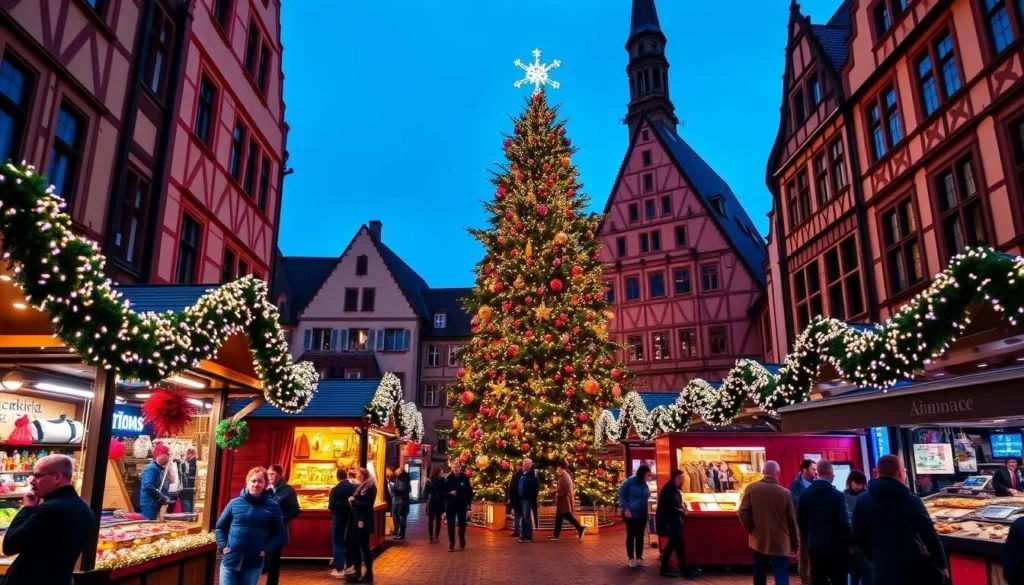
Strasbourg, the capital of Alsace, is a must-visit destination. The best time to visit Strasbourg, Alsace, is during the spring (April-May) when the city’s parks and gardens bloom, or in the winter (December) for its famous Christmas markets. You can enjoy the city’s festive atmosphere, explore its historic center, and visit the iconic Strasbourg Cathedral.
Colmar and the Wine Villages: Optimal Visiting Times

The best season for the Alsace wine route is during the fall (September-October) when the vineyards turn golden and crimson. You can visit charming wine villages like Riquewihr, Eguisheim, and Turckheim, and enjoy wine tastings and vineyard tours. Colmar, with its picturesque half-timbered houses, is particularly enchanting during the spring (April-May) when it hosts the Spring Market, filled with Easter decorations and special events.
Transportation Tips for Different Weather Conditions
Navigating Alsace’s scenic landscapes requires careful consideration of the weather conditions. Your transportation plans should be flexible to accommodate the changing seasons.
Getting Around Alsace in Fair Weather
During fair weather, Alsace’s roads are ideal for exploring the region’s picturesque villages and vineyards. You can rent a car or bike to enjoy the scenic routes at your own pace. Public transportation is also efficient, with regular bus and train services connecting major towns.
Winter Travel Considerations and Alternatives
Winter brings colder temperatures, with lows around 0 degrees Celsius (32 degrees Fahrenheit), and sometimes snow, especially in towns near the Vosges mountains. To navigate the region during this time, you’ll need to adjust your transportation plans. Consider the following tips for a smooth winter trip:
- Use a car with winter tires or chains if you plan to visit higher elevations, as mountain roads can become snow-covered or icy.
- Rely on public transportation, which remains reliable throughout winter, except during heavy snowfall.
- Take advantage of Christmas market shuttle services, which operate between major towns during the holiday season, eliminating parking hassles.
- Join guided tours, which become particularly valuable in winter, as local operators know which routes remain accessible and can adjust itineraries based on weather conditions.
- Allow extra travel time during winter months, especially in December when Christmas market traffic can cause significant delays.
By being prepared and flexible, you can enjoy Alsace’s winter charm while ensuring a safe and enjoyable trip.
Accommodation Strategies Based on Season
When planning your trip to Alsace, choosing the right accommodation based on the season can greatly enhance your experience. The region offers a variety of activities and landscapes throughout the year, making it essential to select a place that complements your plans.
High Season vs. Off-Season: Price Differences and Availability
During peak seasons, such as summer and December, prices for accommodations tend to be higher, and availability can be limited. In contrast, the off-season often brings better deals and more options. For instance, visiting in the shoulder season (April-May or September-October) can provide a more relaxed experience and lower prices.
Best Places to Stay for Seasonal Activities
For a wine-focused trip during harvest season (September-October), consider staying in villages like Mittelbergheim or Riquewihr, which offer direct access to vineyards and tasting rooms. If you’re looking for winter sports, accommodations near Le Markstein or Grand Ballon in the Vosges Mountains are ideal. In December, base yourself in Strasbourg to fully experience the Christmas markets.
Conclusion: Planning Your Perfect Weather-Savvy Trip to Alsace
Armed with knowledge of Alsace’s weather patterns, you’re ready to embark on an unforgettable adventure. You can now plan your trip with confidence, choosing the perfect time to visit this enchanting region. Whether you’re drawn to spring’s blooming landscapes or fall’s golden vineyards, your journey will be tailored to your preferences. May, June, September, and October offer the most balanced experience. Use this guide to make the most of your visit and enjoy Alsace at its best.
The above is subject to change.
Check back often to TRAVEL.COM for the latest travel tips and deals.
